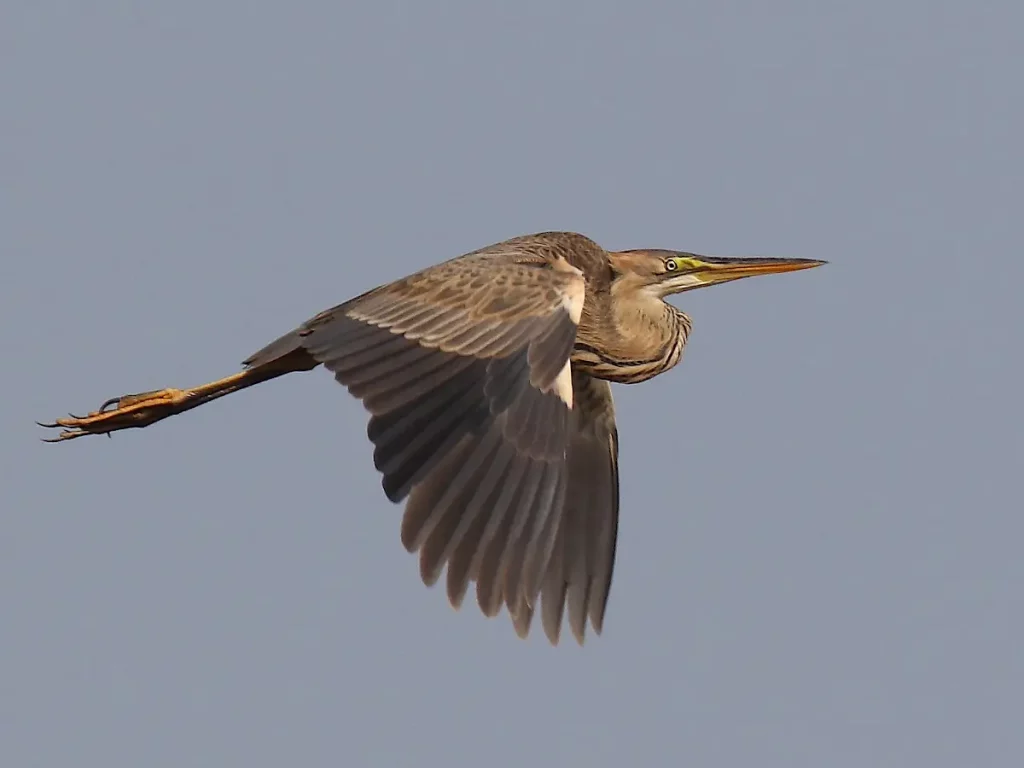The Purple Heron is a wading bird belonging to the heron family. While it is similar to a Grey Heron, it’s a little smaller and has darker plumage.
Bird information.
Where can we see a Purple Heron?
These Herons were photographed at our newly formed water park, a short walk from Footsteps. Otherwise, you would find them in still freshwater lakes or reservoirs, with dense vegetation and reed beds.
What does it look like?
The purple heron is a large bird, 78–97 cm in length with a standing height of 70 to 94 cm and a 120–152 cm wingspan. However, it is slender for its size, weighing only 0.5 to 1.35 kg. It is somewhat smaller than the grey heron, from which it can be distinguished by its darker reddish-brown plumage, and, in adults, its darker grey back.
Adults have the forehead and the crown of the head black, with a dark stripe down the back of the neck that terminates in a slender, dangling crest. This is shorter than the crest of the grey heron and does not exceed 140 mm. The sides of the head and the neck are buffish chestnut in colour, with dark streaks and lines down either side of the whole neck. The mantle is oily brown and the upper scapular feathers are elongated but not the lower ones. The rest of the upper parts and the tail are brownish-grey. The front of the neck is paler than the sides and there are some elongated feathers at the base of the neck that is streaked with white, chestnut and black.
The breast is chestnut brown, with some blackening at the side, and the belly and under-tail coverts are black. The brownish-yellow beak is long, straight and powerful, and is brighter in colour in breeding adults. The iris is yellow, the legs are brown at the front, and yellowish behind. Source Wikipedia.
What does it feed on?
It feeds on a variety of prey including mice, fish, frogs and insects.
Want to know an interesting Factoid?
They are carnivorous and one of the species to which the Agreement on the Conservation of African-Eurasian Migratory Waterbirds (AEWA) applies.
How does it sound?
Its call is a grating frarnk!


